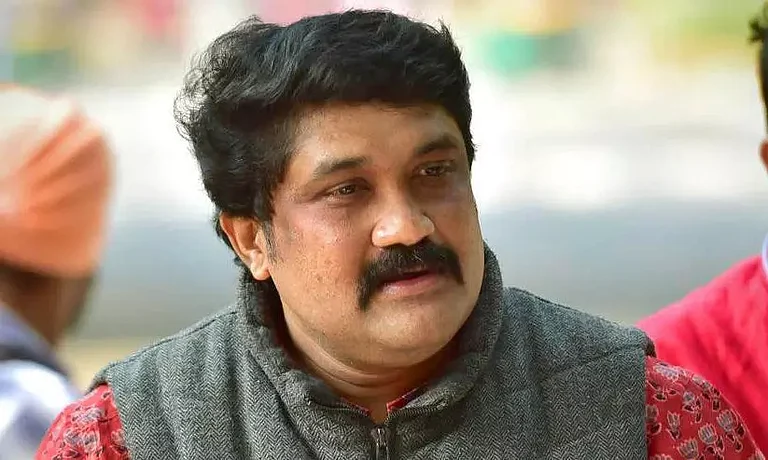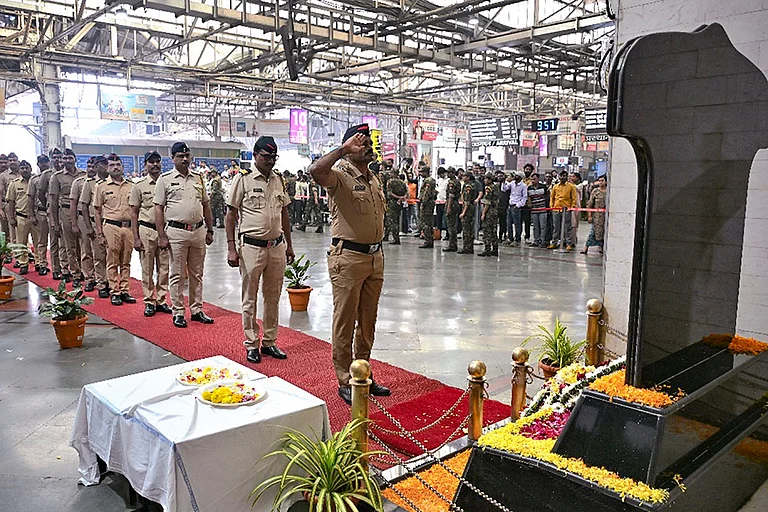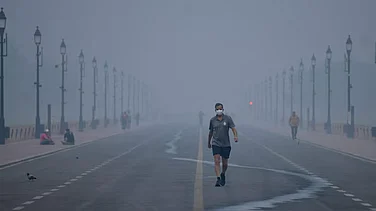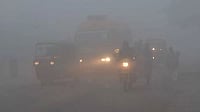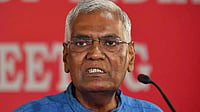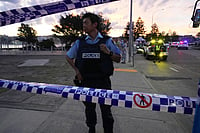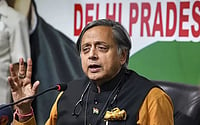A structural engineer explained that eroded nuts and bolts were likely the reason behind the collapse of the Chhatrapati Shivaji Maharaj statue in Maharashtra's Sindhudurg district.
The engineer said that the corroded nuts and bolts likely caused a failure in steel members, forming the frame inside the statue.
Amresh Kumar -- working with a consultancy -- said that the "ankles" of a statue, which holds the weight of the entire structure, are the most critical for stability and therefore, require special attention in the designing stage.
The 35-foot-statue of the Maratha warrior king collapsed on Monday afternoon. Built by the Indian Navy, the statue was unveiled by Prime Minister Narendra Modi at the Rajkot fort during Navy Day last year.
According to the Bureau of Indian Standards, even though officials have claimed that winds blowing at speeds of 45 kilometers an hour caused the collapse, however wind speeds up to almost three times are accounted for while designing a structure.
"In this statue's case, external factors such as loads or climatic conditions do not appear to have caused trouble. Rather, corrosion in the nuts and bolts, as mentioned in the PWD report, could have caused a failure of steel members making up the frame inside the statue," Kumar told news agency PTI.
Notably, an assistant engineer at the Maharashtra Public Works Department (PWD) had written to Naval commander Abhishek Karbhari, Area Coastal Security Officer and Area Civil-Military Liaison Officer on August 20. The PWD officer pointed out that the nuts and bolts used to fix the statue on the fort were getting corroded due to the exposure to ocean winds and rains.
"While steel members forming a structure, in this case, the statue's frame - are commonly protected against corrosion, the nuts and bolts used in connecting these members are commonly ignored, leaving them more vulnerable due to exposure to environment," Kumar added.
The engineer recommended that along with members, nuts and bolts should also be protected, either by painting or galvanising, especially in the coastal regions where the air is rich in moisture and salt, and is therefore, more corrosive.
Galvanisation is a process of applying a protective layer of zinc on steel or iron, generally done by dipping them in molten zinc.
However, the nuts and bolts corroded because of the environment, leading to the collapse of the structure in about eight months of its construction, Kumar added.
He said that the bolts used in connecting steel members and providing stability can often be acquired at a construction site much before they are due for installation.
Hence, Kumar suggested that regular checks should be conducted at the site, specifically before installing or using them in construction.
Notably, the collapse of Shivaji Maharaj's statue bears a striking similarity to that of a 40-foot-tall statue near the Birsa Munda Hockey Stadium and Rourkela Airport in Odisha in June, 2023.
The statues in both the cases gave way near the "ankle" region of the people they were depicting.
“Statues are, in essence, tall and slender structures supported on a compacted base, in which anchor bolts are closely or densely packed. Special attention, therefore, needs to be given to ‘ankles’ during the design stage, such that the statue's centre of gravity is maintained and does not cause tensions at the base,” Kumar explained.
He said that in regular structures such as buildings, beams and columns are arranged in a grid-like manner. So that if a column fails, the surrounding members can act as "back-up" to preserve structural integrity. 4
“On the other hand, statues are usually ‘vertical cantilevers’ in that they are supported at one end (at the base) and free at the other. The framing members and connecting bolts at the base are the sole bearers of the weight acting at the point and, therefore, there are no ‘back-up’ members in an event of failure,” the engineer added.
The statue in Odisha last year had been installed in January last year, ahead of the FIH Odisha Hockey Men's World Cup 2023, and was dedicated to hockey players.
Meanwhile, the structural engineer named in the case in connection with the Maratha King's statue collapse -- Chetan Patil -- claimed that he was not the structural consultant for the statue.
"I am nowhere related to this. I did not have any work order that I was appointed to. The work was given to the Thane-based firm. I was just told to work on the platform on which the statue was being erected," Patil said.
Patil, who has been named in the case along with artist Jaideep Apte, reportedly said that he submitted the platform's design to the Indian Navy through the Public Works Department (PWD) and had nothing to do with the statue.
“It was a company in Thane which had done the statue-related work,” Patil was heard saying on a news channel. He also said that he was drawn into the Shivaji Maharaj statue collapse FIR.







